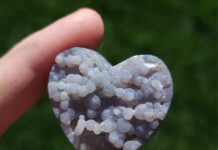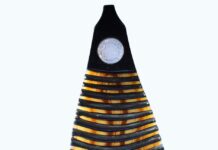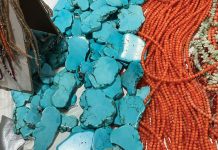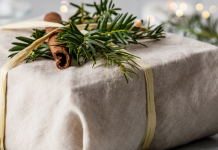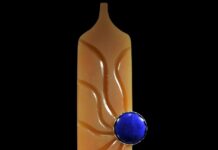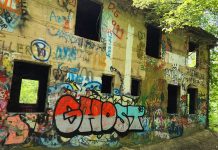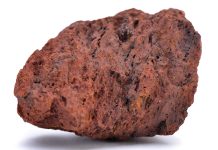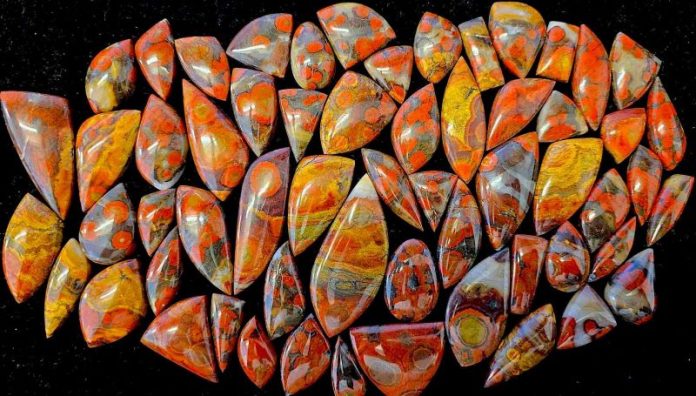
Poppy jasper from Morgan Hill is a scarce material that yields beautiful results for lapidaries. Here’s how to pick raw materials and use them in the workshop.
Morgan Hill Poppy Jasper
In California, there are very few places to collect semi-precious stones. Many locations from the past have been either exhausted of the material or the land has been developed. In the northern portion of the state, many like to venture out along the Stony Creek area in the hunt for brecciated jaspers, and down south the Cady’s mountains have always been a good source of beautiful seam agates and various jaspers.
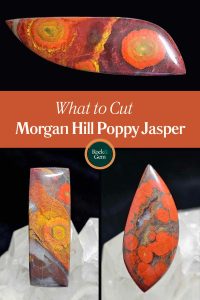
The town of Morgan Hill at one time was the only source of rockhounding in the greater Bay Area. When poppy jasper was first discovered, Morgan Hill itself was just a small farming community that no one ever heard of, but since the discovery of poppy jasper, it skyrocketed the notoriety of Morgan Hill. Poppy jasper became the official city stone, it was used to name the recreation center, a local microbrew beer, as well as the international film festival there. The stone was named after the State Flower, the California poppy, which resides naturally all over that area.
At the beginning of 2023, the rockhounding world lost yet another stone because of growth and development. The county shut down digging for this material many years ago, but it was still alluvial and made its way into the creek. Erosion brought quite a bit to the surface allowing collectors to pick up some from the surface. However, last year Santa Clara County decided to develop the unused part of land and create a multi-use paved trail for joggers and cyclists. The county also landscaped the area to create a new wetland habitat.
A Tricky Material
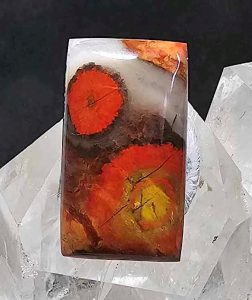 For those who manage to obtain this material while it is still around, it’s one of those that can be very tricky. There are various directions a lapidary can go to create cabs from the rough material. Many people enjoy the natural look, displaying the cosmetic surface fractures that are indicative of most California jaspers. Since this material resides directly on the San Andreas fault line, the ground is constantly moving under the surface, breaking everything up. Most of this material has healed fractures in it, but it also contains many hairline fractures that can be cabbed as is, or will need to be stabilized, depending on the end product you choose.
For those who manage to obtain this material while it is still around, it’s one of those that can be very tricky. There are various directions a lapidary can go to create cabs from the rough material. Many people enjoy the natural look, displaying the cosmetic surface fractures that are indicative of most California jaspers. Since this material resides directly on the San Andreas fault line, the ground is constantly moving under the surface, breaking everything up. Most of this material has healed fractures in it, but it also contains many hairline fractures that can be cabbed as is, or will need to be stabilized, depending on the end product you choose.
Over the years, I have worked around a few other lapidary artists who like to “coat” the surface of their slabs with epoxy, to fill in the hairline fractures, giving it a healed look and adding stability to the finished stone. Other lapidaries will use a vacuum chamber and inject as much epoxy into the stone before cabbing. The vacuum chamber does a far better job of filling in the fractures, but it still might leave undercutting areas in your work as a result.
Cabbing Poppy Jasper
When I cab poppy jasper, I like to leave it in its natural state and cut around the major fractures in the stone. Much of this material is in layers, which is what I use as a guide to cut with, and not across. When you hold the rough, use a Sharpie pen, mark the fracture lines and cut with them to avoid the slabs breaking apart. Doing this will help avoid deep fractures but you will still have to contend with many micro-fractures throughout your material.
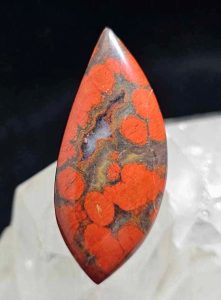 Another way to gain a perfectly smooth surface on your cab is to start the cabbing process and shape your cab on the steel 80-grit wheel. Continue to smooth it out on the soft resin wheels. Once you reach the 280-grit stage, this is where you stop and examine your work looking for open fracture lines that run along the surface of the cab. From here, you can “paint” the surface with epoxy and allow it to dry, filling in everything. Then continue your cabbing process on the 600-grit soft resin wheel. If you use this method and go back to the 280-grit, it might grind out all the epoxy you just filled in, and it will undercut, showing all the fractures that you just tried to seal.
Another way to gain a perfectly smooth surface on your cab is to start the cabbing process and shape your cab on the steel 80-grit wheel. Continue to smooth it out on the soft resin wheels. Once you reach the 280-grit stage, this is where you stop and examine your work looking for open fracture lines that run along the surface of the cab. From here, you can “paint” the surface with epoxy and allow it to dry, filling in everything. Then continue your cabbing process on the 600-grit soft resin wheel. If you use this method and go back to the 280-grit, it might grind out all the epoxy you just filled in, and it will undercut, showing all the fractures that you just tried to seal.
Finishing Up
From this point, continue to the 1200 up to the 14k grit wheel. This should yield a beautifully smooth surface with a nice polish. Morgan Hill poppy jasper doesn’t always gain a mirror polish because much of the jasper content isn’t silicated enough to gain a high polish without a little help. Using some cerium oxide on either a leather or felt wheel or using Zam polishing compound with a felt tip on a Dremel tool will give a mirror polish. The end result is a beautiful shine displaying the gorgeous flowery patterns.
This story about Morgan Hill poppy jasper previously appeared in Rock & Gem magazine. Click here to subscribe. Story by Russ Kaniuth.


